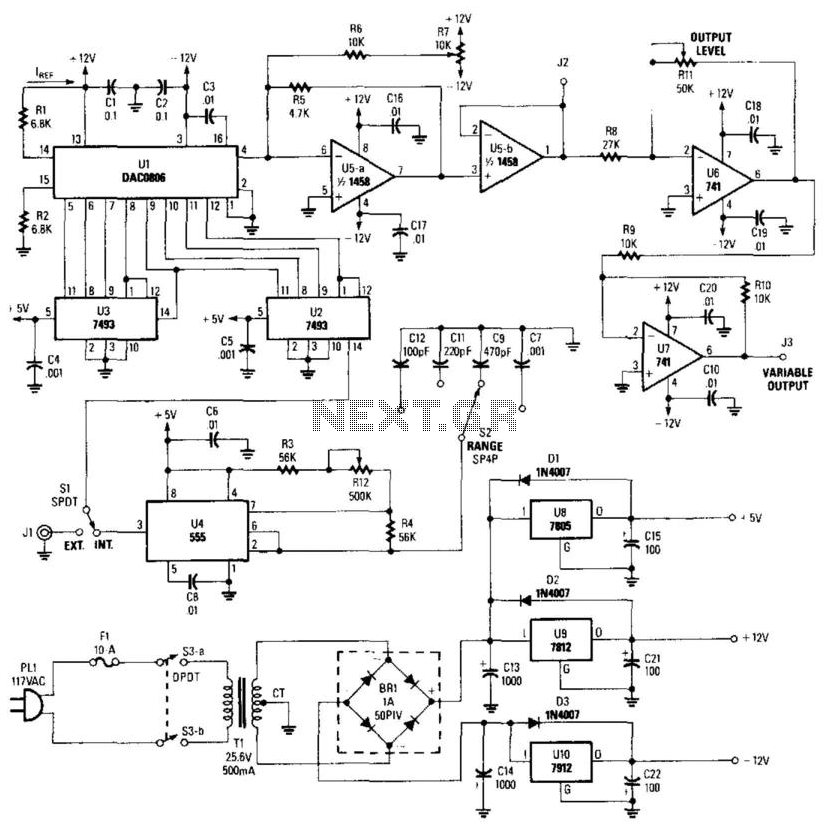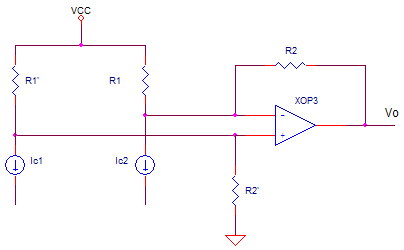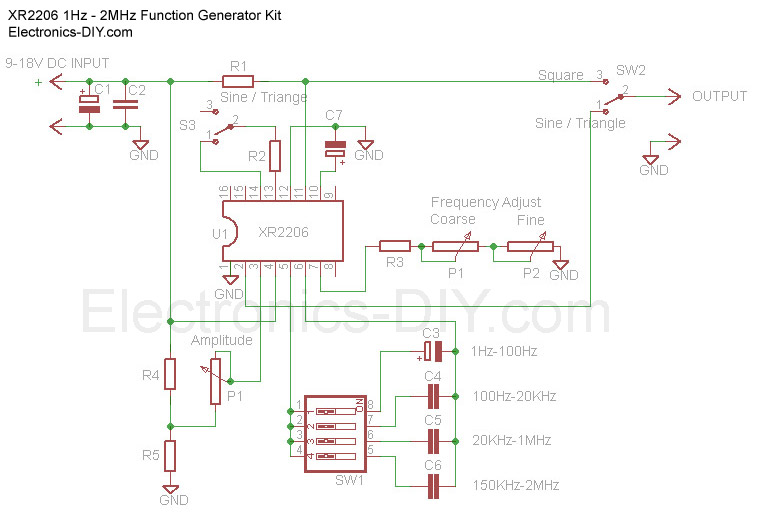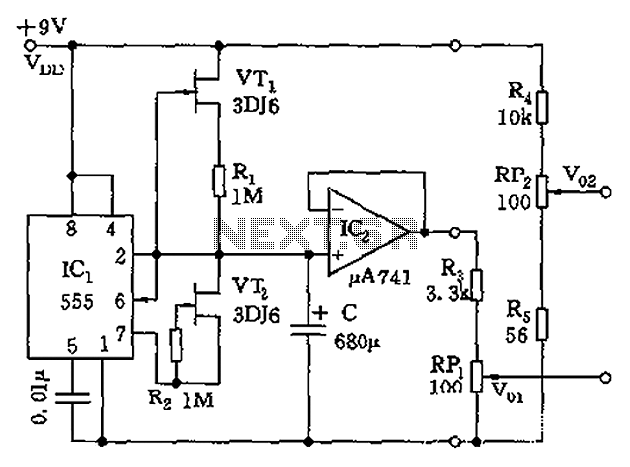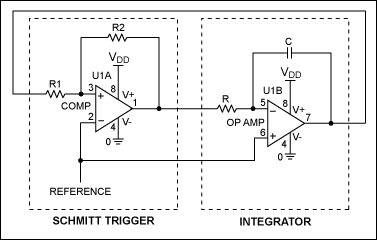
BENCHTOP FUNCTION GENERATOR WITH BUILT IN COUNTER
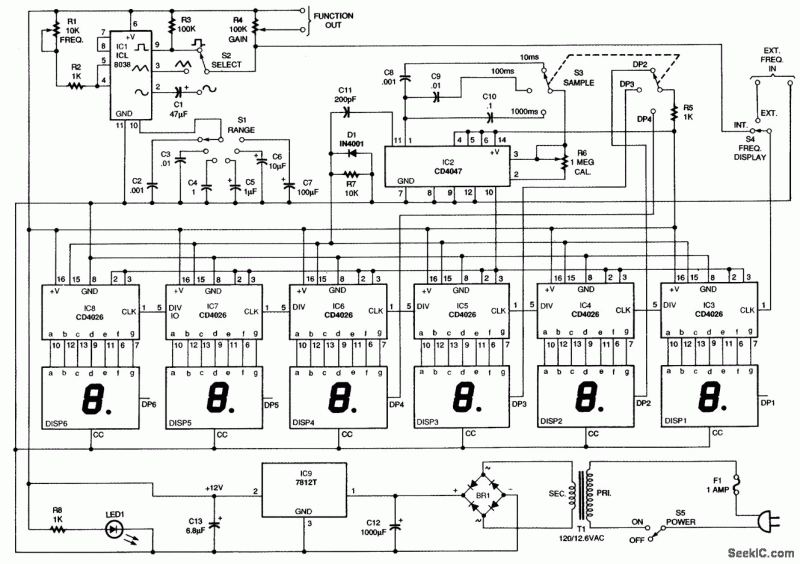
This circuit generates sine, square, and triangle waves ranging from 0.1 Hz to 1 MHz. It includes a counter that measures the frequency of the function generator or an external signal with a peak-to-peak voltage of a few volts, which drives the CMOS counter.
The circuit utilizes a function generator IC capable of producing various waveform outputs, such as sine, square, and triangle waves. The frequency range is achieved through a combination of resistors and capacitors that determine the timing characteristics of the output waveforms. The output stage may include an operational amplifier to buffer the signal and ensure that the waveform maintains its integrity across the specified frequency range.
A CMOS counter is integrated into the circuit to measure the frequency of the generated waveforms or an external signal. This counter is designed to operate with low-voltage signals, typically in the range of a few volts peak-to-peak. The counter's output can be interfaced with a microcontroller or a display unit to provide a visual representation of the frequency being measured.
To enhance the circuit's performance and versatility, additional features may include adjustable amplitude control for the output waveforms, as well as selectable frequency ranges to accommodate different applications. Proper power supply decoupling and grounding practices should also be employed to minimize noise and ensure stable operation across the entire frequency spectrum.
Overall, this circuit serves as a multifunctional signal generator and frequency counter suitable for various applications in electronics testing, signal processing, and educational purposes.This circuit will produce sine, square, and triangle waves from 0. 1 Hz to 1 MHz and has a counter which will read the frequency of the function generator or an external signal of a few volts peak-to-peak that will drive the CMOS counter. 🔗 External reference
The circuit utilizes a function generator IC capable of producing various waveform outputs, such as sine, square, and triangle waves. The frequency range is achieved through a combination of resistors and capacitors that determine the timing characteristics of the output waveforms. The output stage may include an operational amplifier to buffer the signal and ensure that the waveform maintains its integrity across the specified frequency range.
A CMOS counter is integrated into the circuit to measure the frequency of the generated waveforms or an external signal. This counter is designed to operate with low-voltage signals, typically in the range of a few volts peak-to-peak. The counter's output can be interfaced with a microcontroller or a display unit to provide a visual representation of the frequency being measured.
To enhance the circuit's performance and versatility, additional features may include adjustable amplitude control for the output waveforms, as well as selectable frequency ranges to accommodate different applications. Proper power supply decoupling and grounding practices should also be employed to minimize noise and ensure stable operation across the entire frequency spectrum.
Overall, this circuit serves as a multifunctional signal generator and frequency counter suitable for various applications in electronics testing, signal processing, and educational purposes.This circuit will produce sine, square, and triangle waves from 0. 1 Hz to 1 MHz and has a counter which will read the frequency of the function generator or an external signal of a few volts peak-to-peak that will drive the CMOS counter. 🔗 External reference
